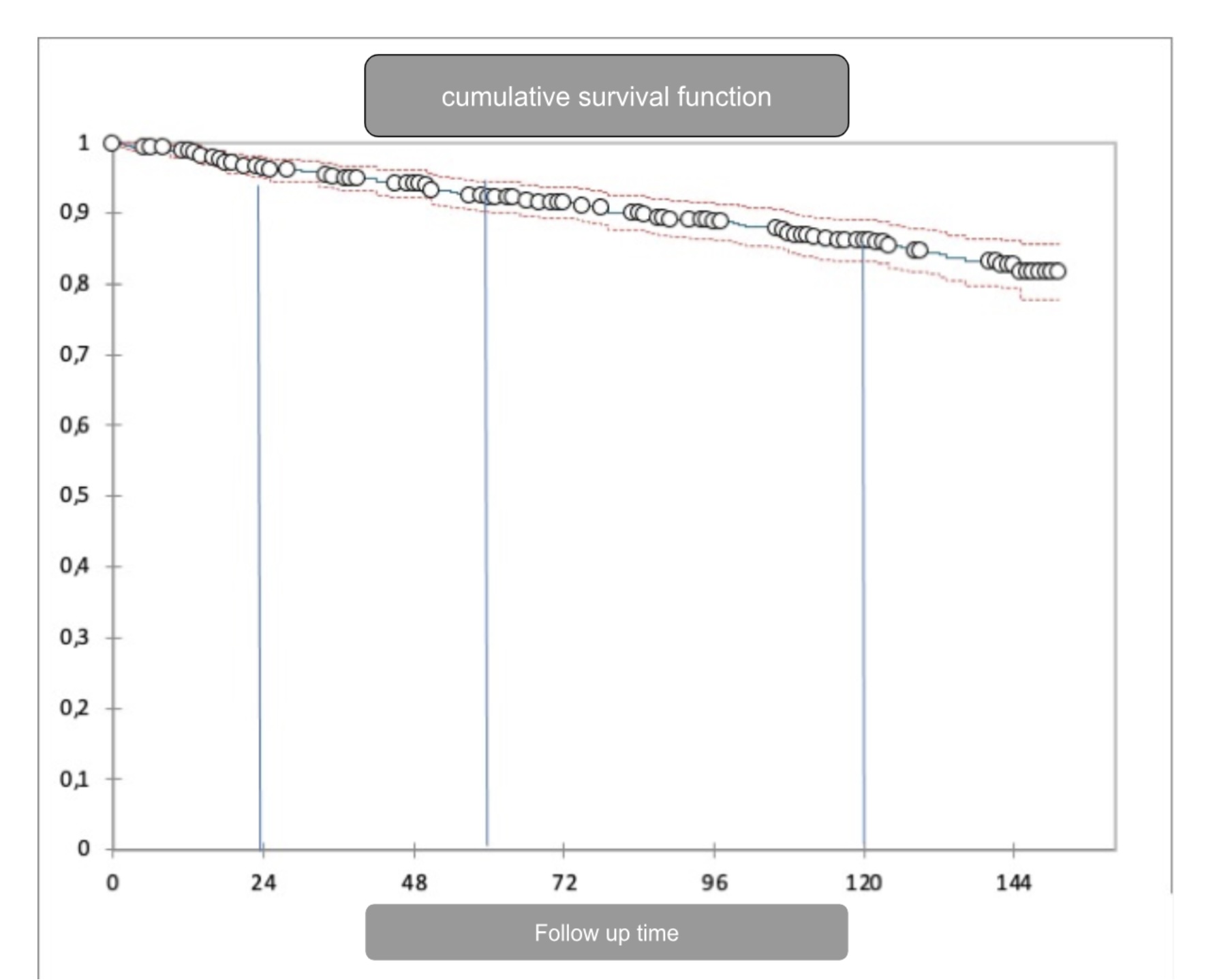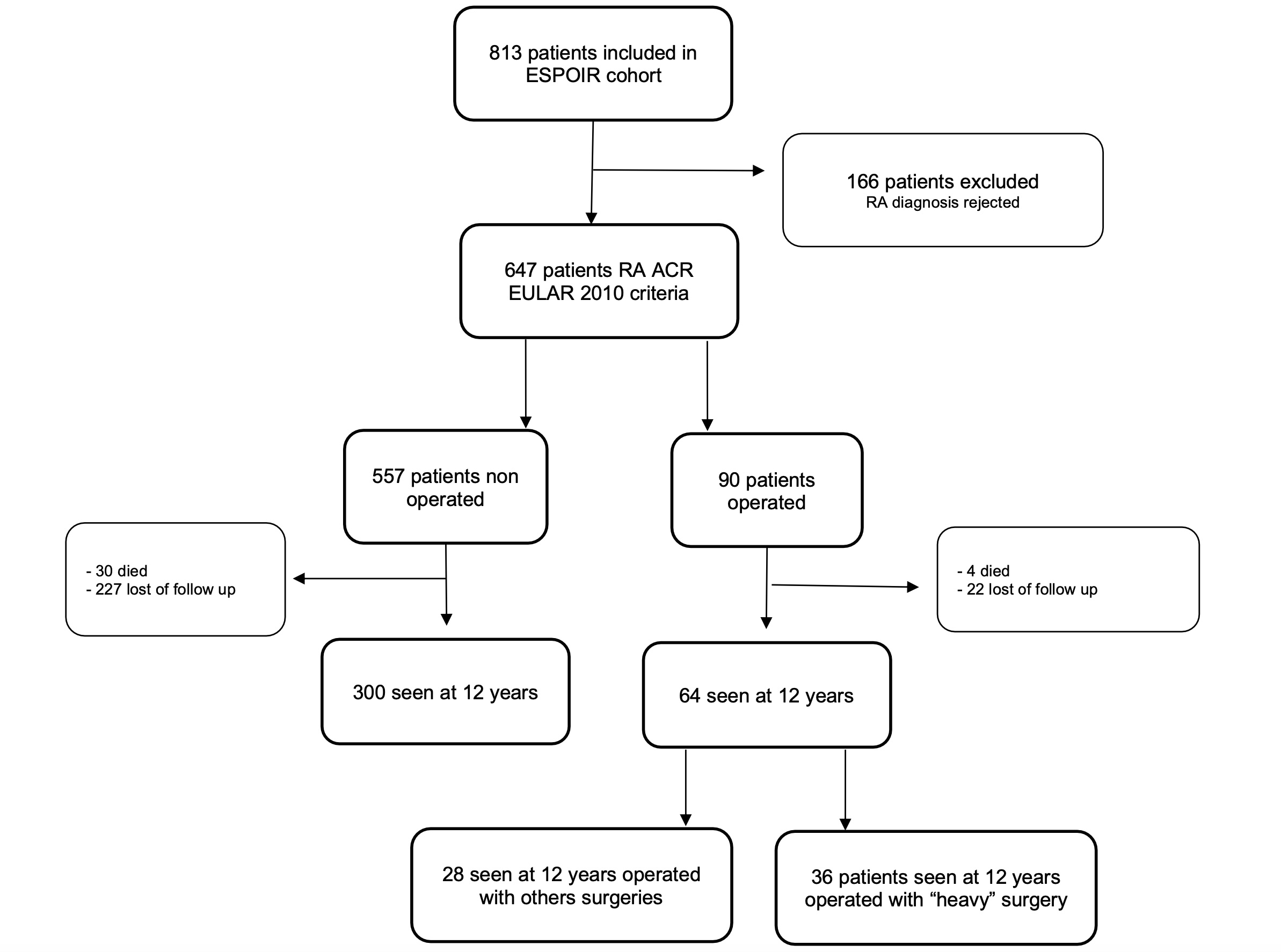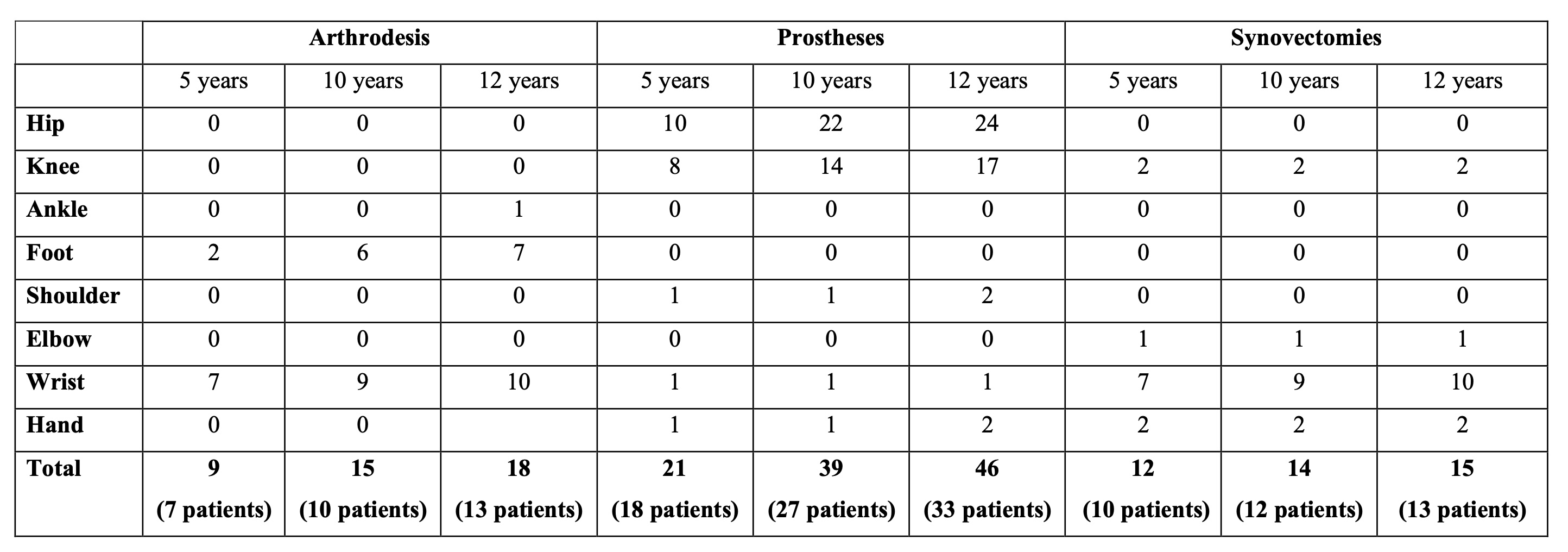Session Information
Session Type: Poster Session B
Session Time: 10:30AM-12:30PM
Background/Purpose: In the 1990s, surgery was a frequent and early step in the management of rheumatoid arthritis. Since treat to target strategy and the advent of biotherapies, overall management has changed radically. Clinical remissions are now much more frequent and joint destruction is better controlled. However, in some cases, surgery is still required, notably when the biotherapies did not manage to improve RA. Our objective was to determine the prevalence and the risk factors for recourse to surgery after 12 years follow up of patients with early polyarthritis.
Methods: We studied patients enrolled in the early-polyarthritis cohort ESPOIR between 2002 and 2005 (at least two swollen joints for >6 weeks and < 6 months, no other diagnosis than RA, and no previous exposure to glucocorticoids or disease-modifying anti-rheumatic drugs). All the patients with RA confirmed in the ESPOIR cohort were included in this study and all the demographic, biological, genetic, radiographic and therapeutic data of each patient were collected from the ESPOIR cohort database. From there, we assessed the prevalence of surgery after 12 years follow up, and evaluated the different risk factors for recourse to all surgery and “major” surgery (arthrodesis, arthroplasty, and synovectomy) in this cohort. Statistical analysis were performed with univariate and multivariate analysis .
Results: From the 647 patients studied, 90 (13.9%) had at least one orthopedic between inclusion and year 12 (Figure 1). Figure 2 shows the studied population and figure 3 the detail of major surgeries over the time. Arthroplasty (N=46, mostly hip and knee) was the most common surgery, and then arthrodesis (N=18; mostly wrist) and synovectomy (N=15; wrist). The significant data at inclusion which were associated to a higher risk of surgery in univariate analysis were the age at diagnosis, the presence of a disability, the HAQ score and the presence of anti-CCP antibodies but we failed to detect good predictors of surgery.
Conclusion: In a cohort of rheumatoid arthritis included between 2002 and 2005, at least one surgery (mainly arthroplasty) was performed in 13.9% of the included patient between inclusion and year 12. Prediction of risk of surgery at inclusion remains a challenge.
To cite this abstract in AMA style:
Wang M, Quere B, Thomas P, TISON A, Guellec D, Gaujoux-Vialat C, Maillefert J, Jousse-Joulin S, Devauchelle V, Letissier H, SARAUX A. Prevalence and Predictors of Orthopaedic Surgery in Rheumatoid Arthritis After 12-Years’ Follow-Up (ESPOIR Cohort) [abstract]. Arthritis Rheumatol. 2024; 76 (suppl 9). https://acrabstracts.org/abstract/prevalence-and-predictors-of-orthopaedic-surgery-in-rheumatoid-arthritis-after-12-years-follow-up-espoir-cohort/. Accessed .« Back to ACR Convergence 2024
ACR Meeting Abstracts - https://acrabstracts.org/abstract/prevalence-and-predictors-of-orthopaedic-surgery-in-rheumatoid-arthritis-after-12-years-follow-up-espoir-cohort/



